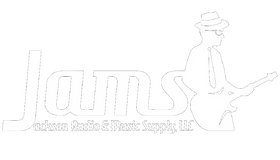The Journey to my First Pedalboard Part IV (Finale)
Finally the board comes together. I honestly could go on and talk about many other details related to this pedal board journey. There are so many factors to consider and so many variables. But it’s time to put a bow on it. Let’s see the process in action:
PRO TIPS
PLAN AHEAD:
For most of us it's almost impossible to see the end from the beginning. Being able to know all the details from the first step won’t happen. Somewhere on the journey you’ll want to make a change: swap a pedal, change the order, reposition…something is going to change. But as much as you can, plan ahead and know what your potential pedals will be before you start to procure them. You’ll want to limit as many variables and surprises as possible.
LAY IT OUT:
Collect your pedals and plan it out before you install them on the board. Give yourself time to test the pedals and make sure you are satisfied with their performance. Play with the order and make sure all your pedals complement each other. Once you are sure you are happy with the pedals, and the order, visualize their placement and size them up on your pedal board.

YOUR PEDAL BOARD MATTERS:
There is a lot of great options for a pedal board on the market. Make sure you don’t make it an after thought and do as much research on your board as you do your pedals. There’s lots of options and they all basically do the same thing. But know the differences and make sure you pay for the features you need and not the features you don’t need. Most likely you'll want more real estate than you think so choose to size up opposed to size down.

VELCRO IS THE WAY:
I don’t love it, but the most effective and efficient method to mount your pedals is velcro. There are other methods and systems available on the market, but you’ll be paying for the design. That being said, don’t cheap out on the velcro. You don’t want weak adhesive or bad hook and loop design. The pedals you buy average at least $100 a piece so invest in an extra $1 and make sure your pedals stay attached.
CABLES ARE KEY:
Don’t overlook your cables. The right guitar cable is important. Don't overpay for a cable that doesn’t justify the hype or the cost, but don't grab the cheapest option you can find. Know what components make good cable perform. Do gold connectors make a difference? I have enough experience to safely say that the minimal amount of gold plating on a connector won’t significantly effect your signal. Do you love Pancake style connectors, well there not as low profile and space saving as other connector designs. Thicker cables don’t always mean better. Just because a cable has a thicker heavier jacket doesn't mean it has great quality copper or shielding on the inside, nor does it mean the connectors are robust. Focus on specs, performance, and design. Premade cables are ok, but they can be tricky to use. If you only have a 6” or 12” cable but need 9” if can be difficult to keep your layout clean without extra cable. I’m not a huge fan of solderless connectors as I don’t think they are that easy to work with and not the most reliable. But for those DIY players who don’t have solder skills its a good option for custom length cables. If you can find a local cable tech to make you custom length assemblies that’s your best bet for value and a clean pedal board. Plus they will use good quality components.

Pic 3) Pancake connectors aren't always the best design for your pedals. Go for function and performance. Follow the specs not the hype.
SLOW AND STEADY:
Take your time and don’t rush. If you try to rush your pedal board together an hour before your gig then catastrophe will happen. Take your time, don’t get frustrated. Things may not go exactly perfect together.

Pic 4) Close to the end of the install I found there was limited clearance to plug in my standard guitar cable to my VPJr. Had to add a right angle plug to my cable to save some space. Now I can easily remove my guitar cable for quick and easy tear down.

SUMMARY:
At the end of the process I have great simple pedal board. It's not perfect. If I had to do it over I would probably not used the Pancake style connectors and need to clean up some extra cable length. But I have a great quality board, with plenty of extra space for add-ons. Everything is semi-permanent so when I'm ready for changes I can do it without destroying everything. Most importantly it's very functional. My pedals are secure, easy to access, and setup and tear down is simple. Did it take me 10 years to build this board? Yes and no. I've learned a lot over 10 years that has led me here, but the actual build process obviously didn't take that long. I do recommend you take your time, plan it out, be open to change, and you'll be happier in the long run. Party on!


